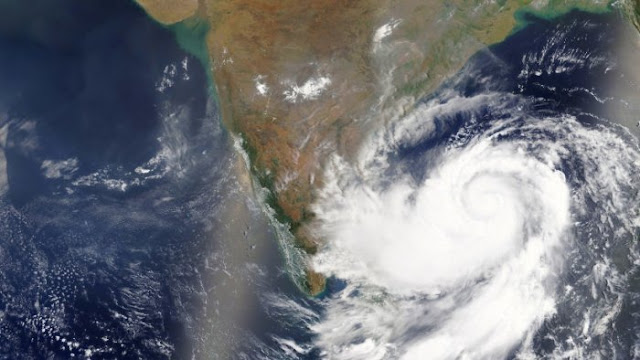CYCLONE MOCHA
The Indian Ocean cyclone season of 2023 is set to kick off
in the month of May, with a fresh system currently brewing in the Bay of
Bengal.
According to the India
Meteorological Division (IMD), a low-pressure region is probably going to shape
over Southeast Bay of Bengal this this weekend.
. It will then concentrate into a depression by May
8, and subsequently strengthen into a Cyclonic Storm while moving north, towards
Central Bay of Bengal.
Upon its
intensification into a Cyclonic Storm, the system will be named Cyclone
Mocha.
Why
is it named as Cyclone Mocha?
This name, suggested by
Yemen, originates from the Yemeni city Mocha
(or Mokha) situated on the Red Ocean coast. Long known for its coffee trade,
the port city likewise gave its name to the renowned Mocha espresso.
How Cyclones are named?
The naming of this cyclone was done as per the decree issued by
the World Meteorological Organisation (WMO), which states that each cyclone
must be named to avoid confusion in instances where multiple systems operate in
one location.
All
over the world, six regional specialised
meteorological centres (RSMCs) and five regional Tropical Storm Warning Centres
(TCWCs) are authorised to issue tropical cyclone advisories and names.
The India
Meteorological Division (IMD) is the RSMC liable for nations in South and
Southeast Asia. These incorporate India, Bangladesh, Iran, Myanmar, Maldives,
Oman, Pakistan, Qatar, Saudi Arabia, Sri Lanka, Thailand, Joined Middle
Easterner Emirates (UAE) and Yemen.
The
most recent compilation published by the IMD
in April 2020 comprises of 169 names that can be utilized for cyclone classification, with each of the
previously mentioned nations offering 13 titles. The 169 names are then
positioned into 13 lists, with each list consisting
of at least one submission from every country.
One list is utilised completely before
moving on to the next. The names of the nations are
alphabetised, and their prescribed titles are then allocated to the tempests
arising in the Indian Sea and South Pacific regions.
So far,
12 names from the current compilation’s List 1 — Nisarga, Gati, Nivar, Burevi, Tauktae, Yaas,
Gulab, Shaheen, Jawad, Asani, Sitrang and Mandous — have previously been
utilized, with 'Mocha' set to be the next



